|
Springers museum......
Fake violins |
 Violin
Home page
Violin
Home page |
|
|
Since
the early days of violins there have been copies and fakes
of the best makers. Stradivarius faked a violin of his
teacher, Amati. Stradivarius violins are of course the most
copied violins in the world. They are not necessarily fakes but just
intended as copies or made in the Stradivari pattern. Others
are made to deceive. In the 19th century there were hundreds of
violin makers competing for custom. Some turned to ageing
violins, faking old varnish, cracks repairs and of course
the old label, then selling them to antique shops. Some were
made in quantity. Two examples below. |
|
| |
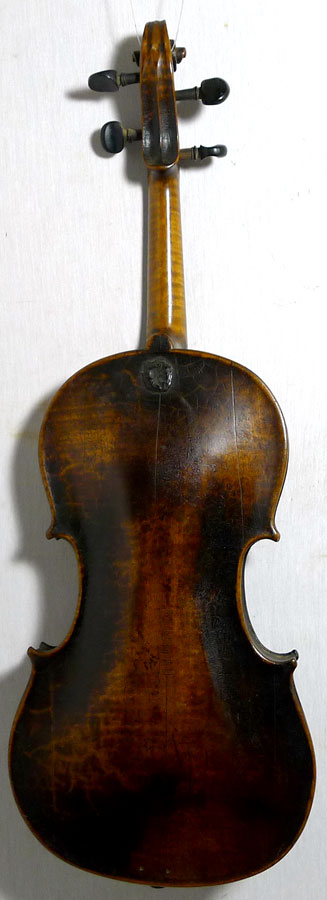 |
A 19th century Amaiti fake.
With a convincing ageing label:-
Nicolaus Amatus Fecit
In Cremona 16..
The varnish has been artificially
aged by darkening in places, and crazed. The
apparent cracks are just darkened score lines but
closer inspection will show that they are not along the grain.
Below the button on the back is a wax seal which
purports to be an importing customs seal of the 18th
century. It also has scored lines on the neck-peg
box to imitate a neck graft.
This is an example of a fake that
was made in significant numbers.
|
 |
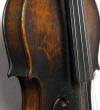 |
 |
|
|
|
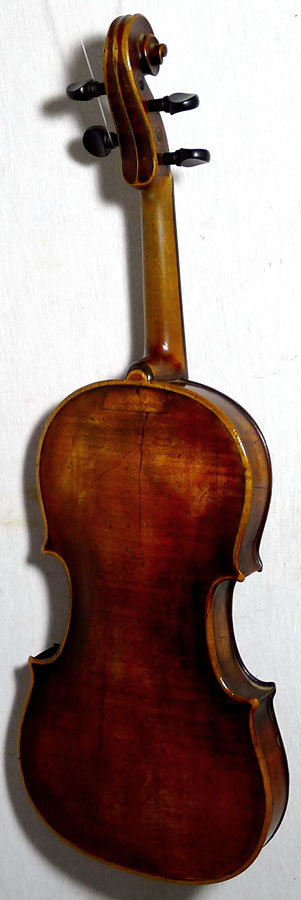 |
An interesting skilfully created Betts. London
fake. Rather overdone with the fake
cracks. The back has a false sound post crack which,
genuine,
surely would devalue the violin. Apart from the
cracks it has the lines of a neck graft top and
bottom of the neck. It looks to have had the wood
cut around the top block which normally would be
done to help remove the neck. The edge of the table
has a line all around which would have been done of
the table were to be removed. Even old wood worm
lines are fake. Another convincing label inside.
Despite this the violin is reasonably well made and
plays with a mellow tone. Obviously by a good maker
hard up and trying to sell instruments. Possibly by
a pupil of Betts. e.g. Tobin , a maker who was
know to be destitute at the time of his death. |
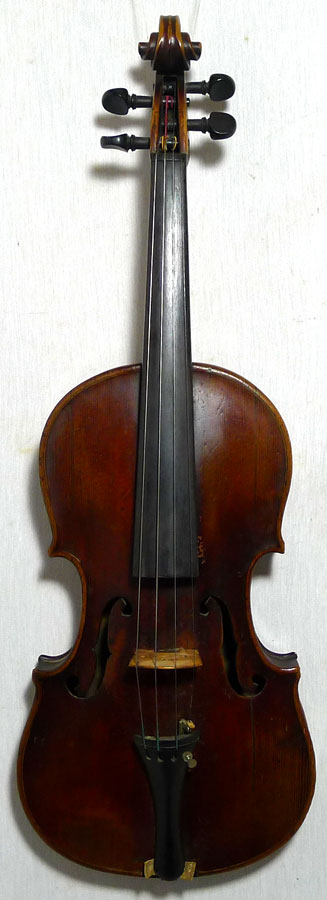 |
|
 |
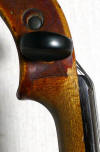 |
 |
|
|
|
| |
There are thousands
of violins from the 19th century imported to England
from Germany with distressed varnish to give an
ageing effect, often done by placing brown paper
over party dried varnish and the lifting the paper
so removing small patches of varnish, and with a
master violin maker label such as Amati,
Stradivarius, Guanerious , Gaspar da Salo. In the
first half of the 19th century there was a tax
levied on imports including violins. However,
violins in the white, i.e. unvarnished and without
fittings, were classed as toy apparently and carried
no tax. As a result 1000s were imported
from Germany for makers to finish (and improve). The
suppliers then put their own labels in making
perhaps a Tyrolean violin appear English. A fake of
origin? Suppliers often put their own labels even
today. |
|
|
|
See also:-
Hardanger Fiddles
Pochette and
kit violins Metal violins Decorated
violins
Unusual
violas
Fakes
Mute violins
Early
violins
|
|
    Museum email Museum email |
|
|
 Violin
Home page
Violin
Home page











